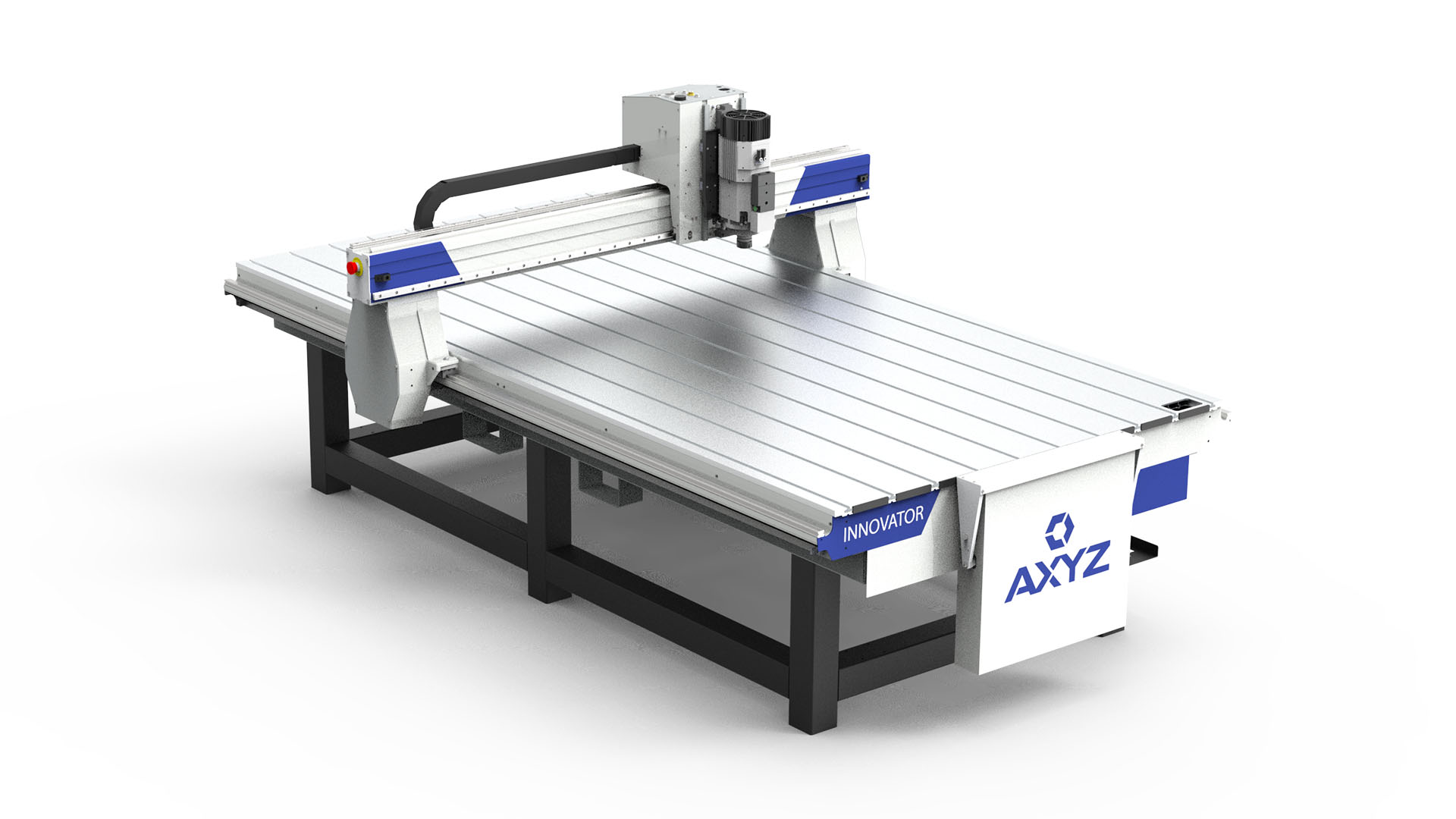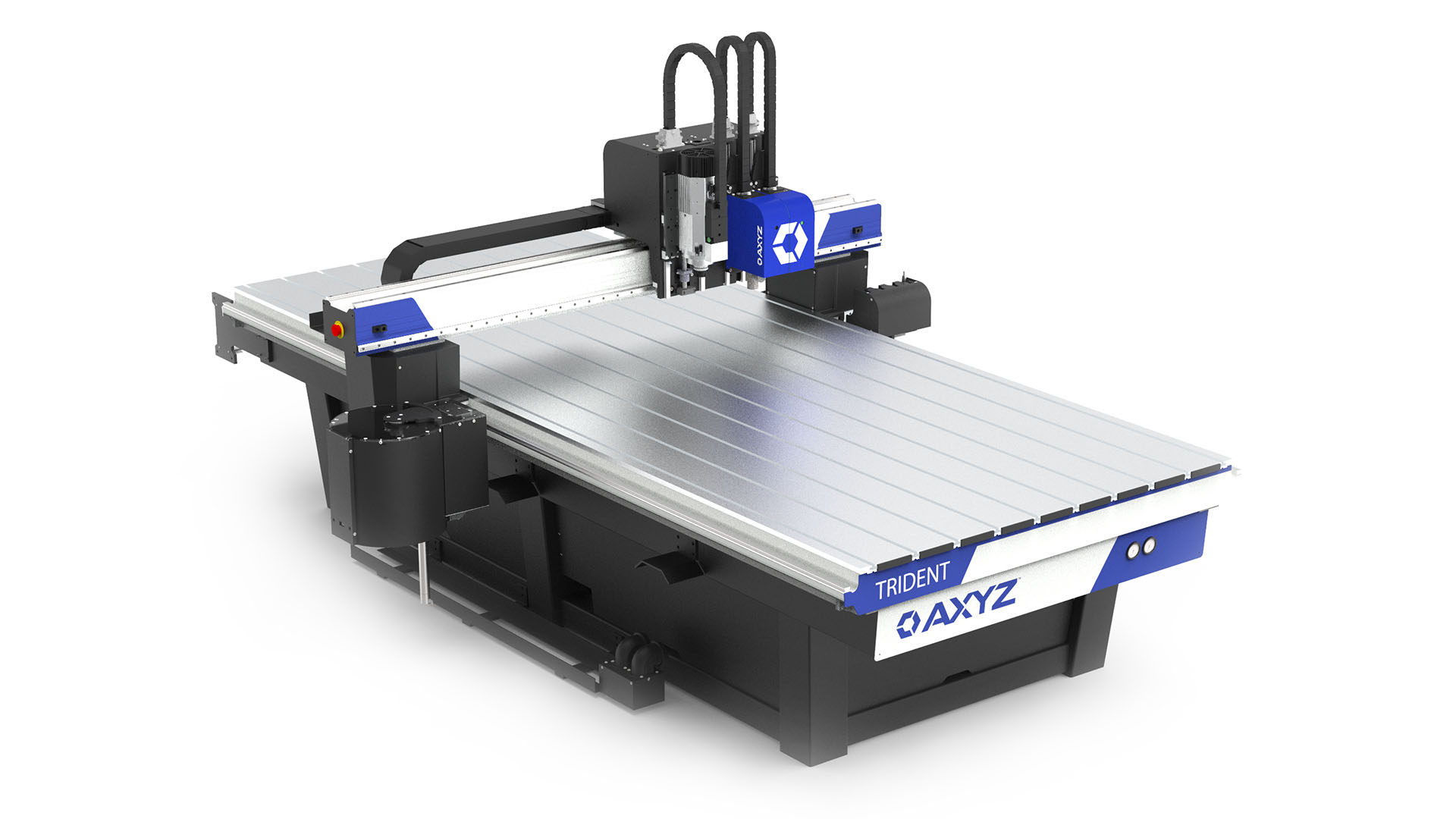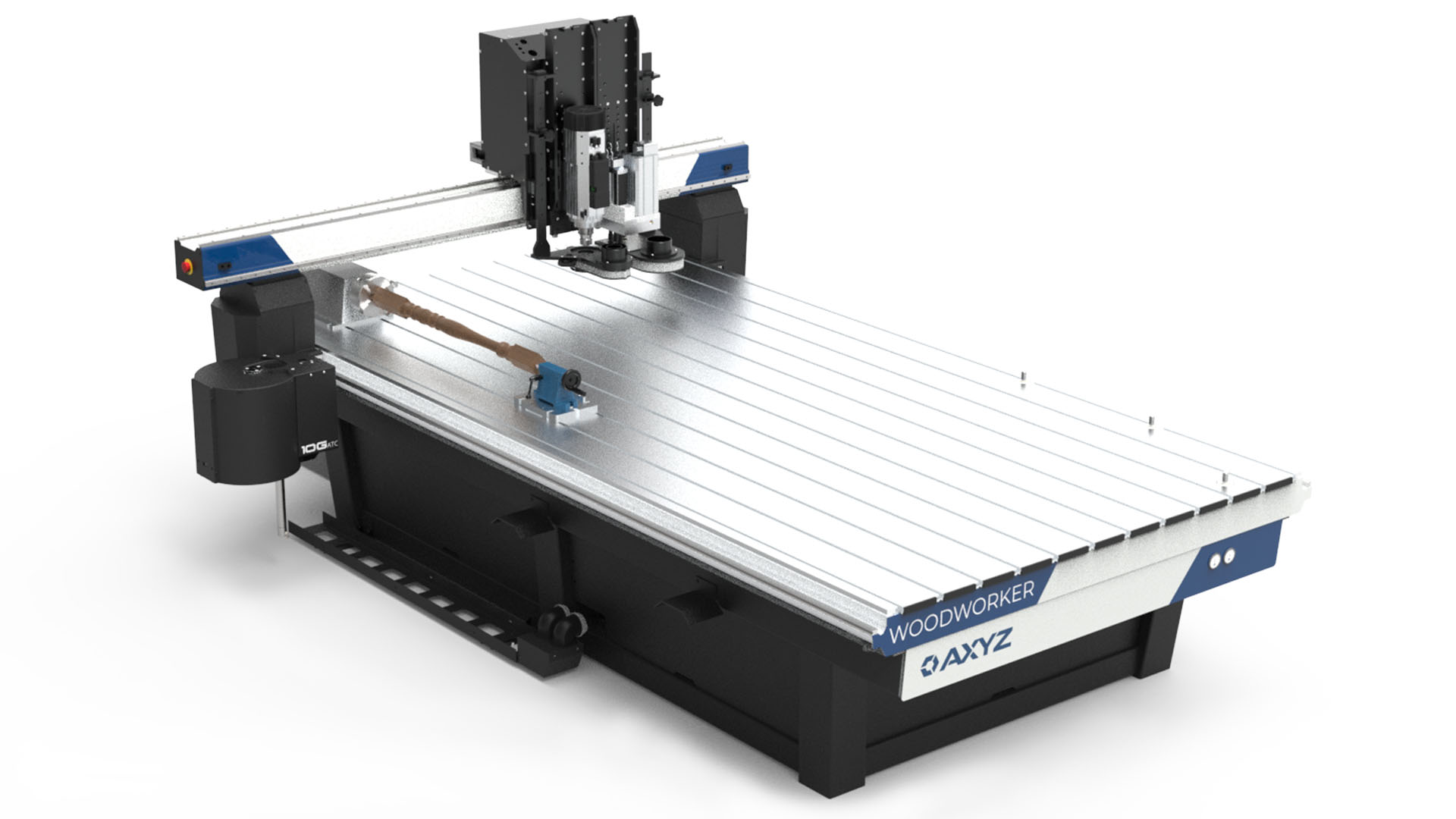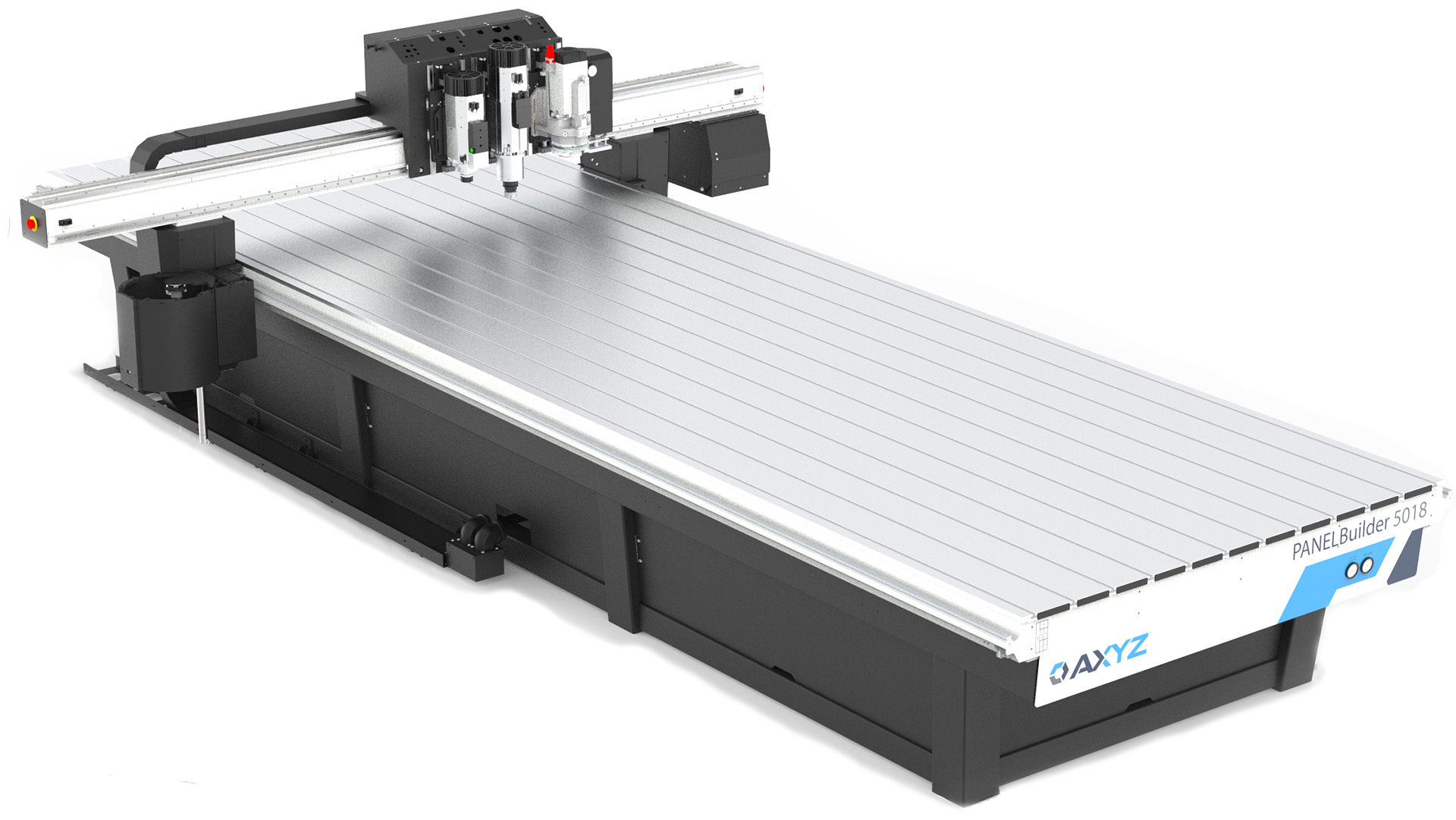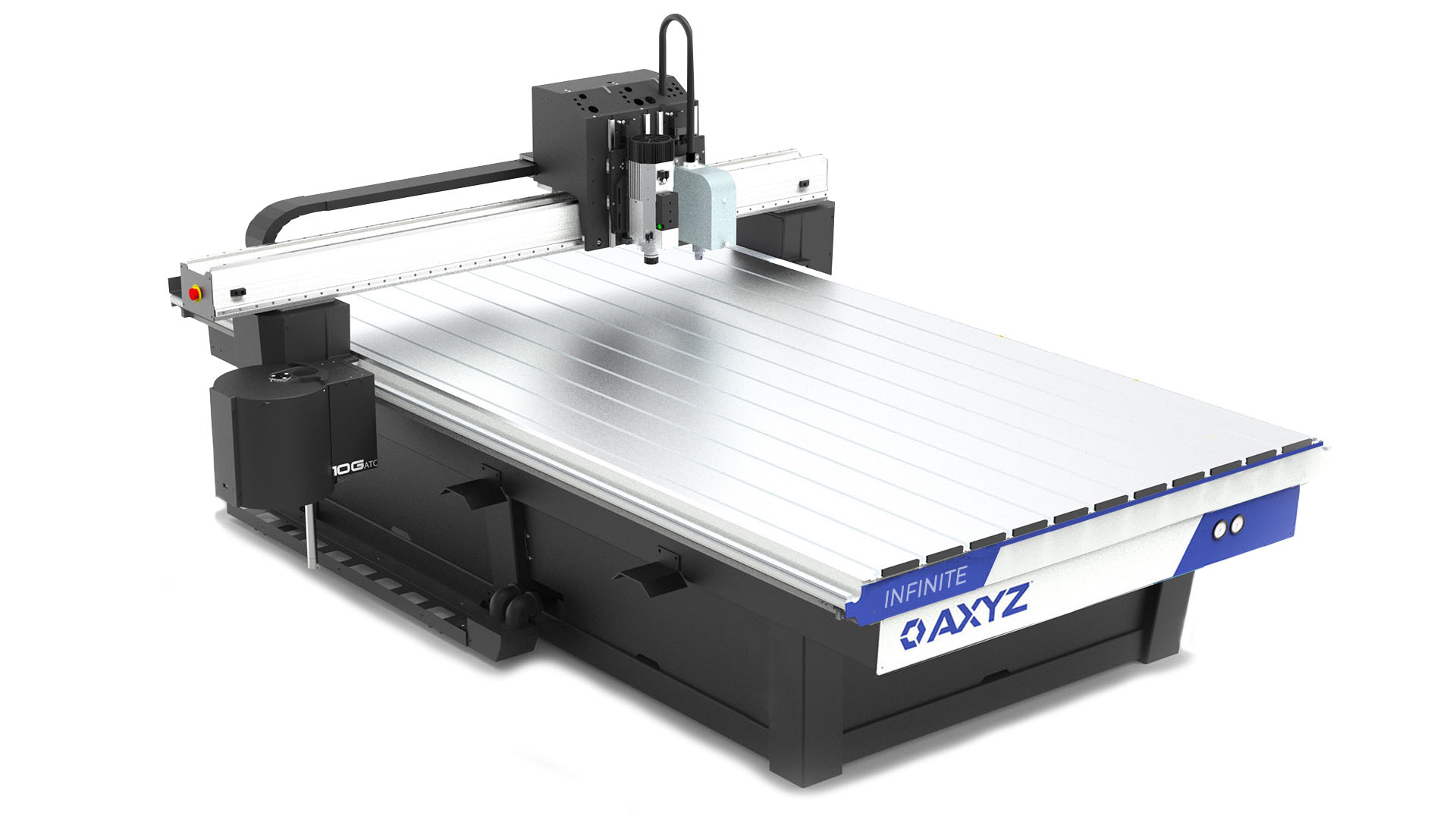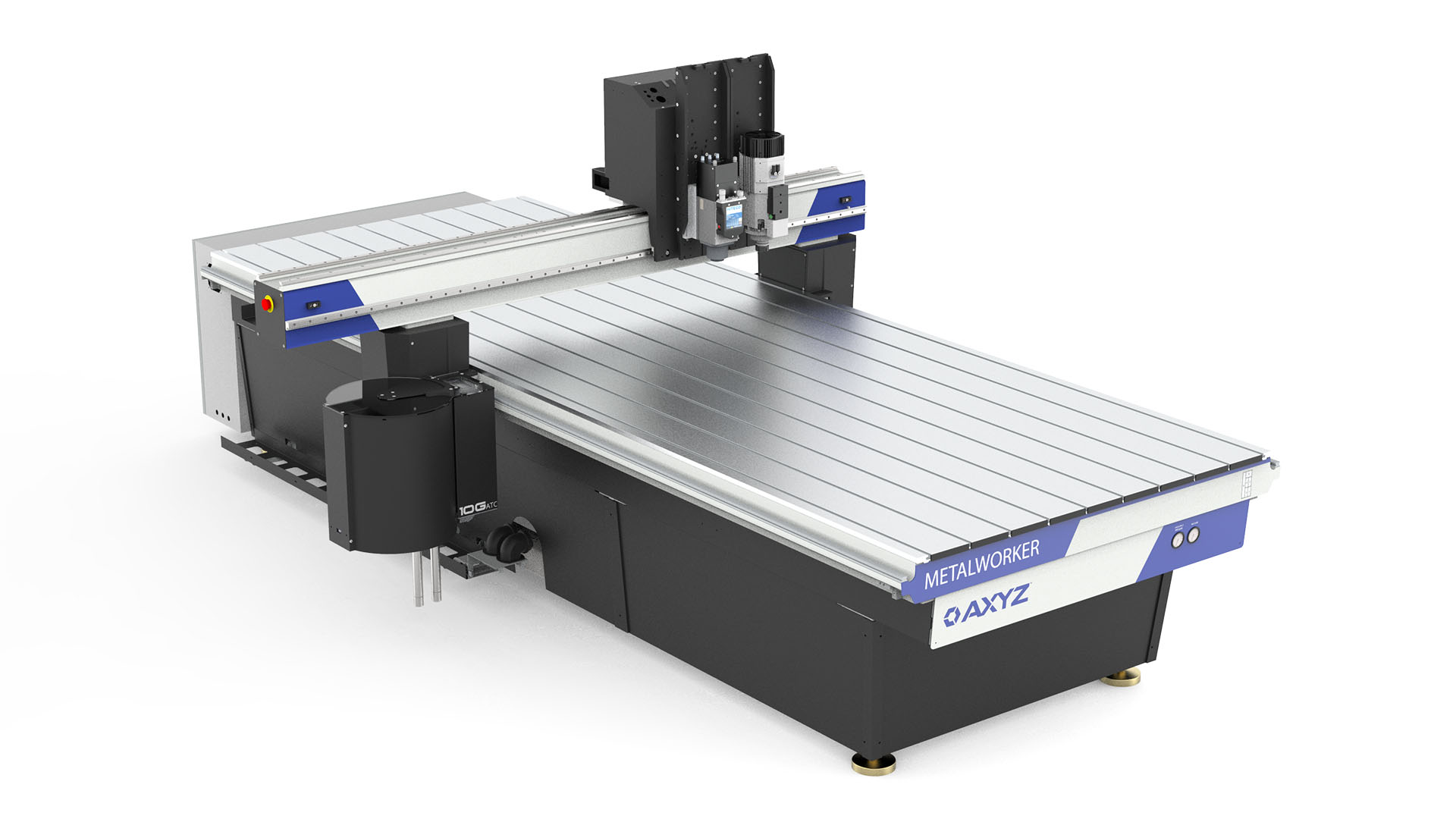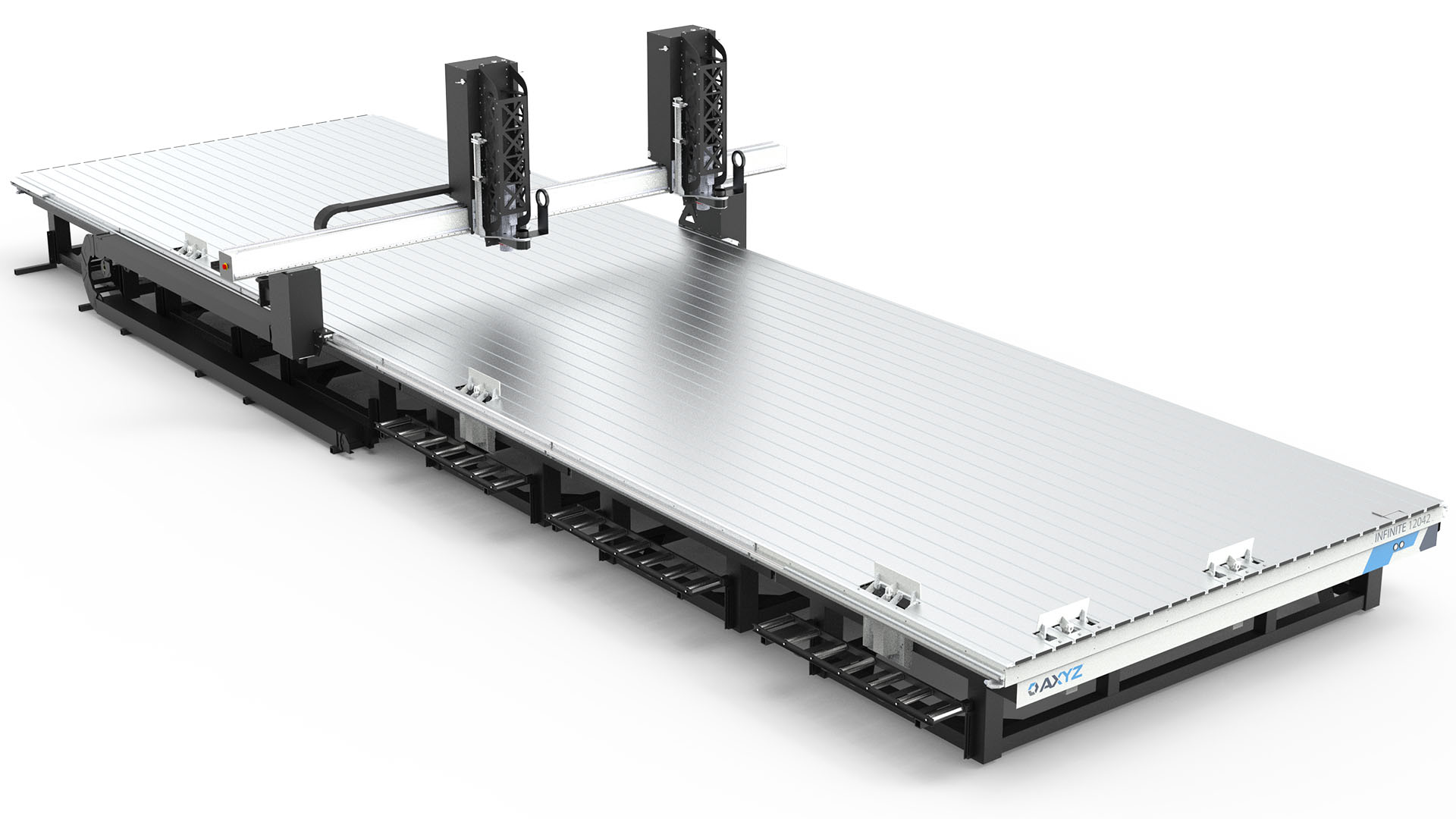Published in the February issue of Sign Media Canada. This can be viewed online HERE.
Today’s CNC routers are the epitome of high-tech sophistication, focused on providing quality and precise cutting and shaping their customers’ demand. Routers, among the largest investments shops can make, are capable of 20 years of production. Looking at it from a purely business perspective, the more routers run, the more income the shop can generate. Idle routers negatively impact the bottom line to the consternation of ownership. All too often, the reason for downtime has nothing to do with the design of the machine and everything to do with how it is maintained. Every router comes with a recommended maintenance program and while companies may conscientiously try to follow it, they sometimes fall short.
These difficulties cannot be broad brushed by simply attributing maintenance shortcomings to negligence. Usually, it’s the smallest and seemingly innocent oversights that can jeopardize operations over the long term, perhaps caused by the rush of the production schedule or a shortage of manpower on a particular day. Frankly, whatever the cause, the problem is still the same. Everything from less than thorough lubrication to improper tooling in the spindle will play a role in shortening the router’s lifespan. Just because the router continues to work efficiently the next day or the day after that is no guarantee against an undesirable cumulative damage certain to shorten the machine’s longevity. These machines should last up to two decades assuming the manufacturer’s maintenance protocols are adhered to on a daily, weekly and monthly basis.
The pitfalls of CNC router maintenance shortcuts
Murphy’s Law, which states that anything that could go wrong will at the worst possible moment, is certainly applicable to router operations, especially when manufacturer-recommended maintenance is not being followed. The last thing any shop needs is an outage during a production run. Sometimes downtime can occur for reasons unrelated to maintenance such as an electrical outage caused by extensive dust in the facility, but such occurrences are rare for the most part. Improper maintenance will increase the likelihood of an incident that is bound to increase workforce and production costs. After all, a CNC router is a production instrument that is well designed and constructed for optimal usage provided the user dutifully follows maintenance protocols for every router component.
“I’ve experienced what the lack of proper maintenance does,” said Andrew Kovach, shop supervisor at Barbican Architectural Products, a manufacturer of commercial and industrial lighting products, Fort Erie, Ont. Barbican operates three routers.
Kovach said he follows the manufacturer’s recommendation to grease and oil biweekly or “every 40 hours when we’re really busy.
“If you don’t keep up on grease and oil, you’ll ruin the bearings and shut them down,” he warned.
There cannot be maintenance shortcuts—not for equipment that is the shop’s lifeblood. Yes, there may be times when the workload or a customer deadline may hamper adherence to a maintenance schedule, but given the expense of the equipment and the potential long-term issues certain to arise from cutting corners, such situations should be avoided. Every maintenance requirement, especially daily lubrication, should be insisted upon by management.
Another positive for router maintenance is that the process is not time-consuming. Greasing racks and bearings, for example, only takes a few minutes, but it is the machine’s technology that simplifies the maintenance process. Today’s routers contain automated logs to update users on maintenance or other issues that it may detect. Each day, the automation updates both maintenance and daily activity schedules. The latter, an internal log, documents every machine activity along with problems that may arise, their history and resolution. The purpose is to reduce the possibility of unexpected complications that could lead to downtime during a production run.
With all the conditions associated with a busy production schedule, it is easy to miss a step or two. Some of the advanced routers’ databases include the entire maintenance log—daily, weekly and monthly—which document the date and time of each action, thus ensuring the prescribed schedule is being followed at all times. Manufacturers can access and send files of each day’s router activity to the shop or other facility using it.
A detailed CNC router maintenance schedule
Maintenance schedules tend to vary with the machine, but there are five guidelines that apply to all of them:
Cleanliness. It does not take long for a machine to get quite dirty. Most of them operate in what can be considered a very dusty environment, which accentuates the need for cleanliness. Buildups of fluids or chips can easily get into the bearings and controls—a sure recipe for problems if not corrected every day. Manufacturers generally recommend hand-sweeping of the machine. An air gun can also be used to keep substances away from the bearings. Another fairly standard recommendation: lower the air pressure during the cleaning process.
Change filters. If this sounds like an instruction found in an automobile manual, there is a reason for the similarity. Just as clogged filters jeopardize a car’s engine efficiency, the same applies to the machine’s control box and vacuum pumps. They, too, must be changed on a regular basis as do pneumatic filters that trap oil and water in the pneumatic lines. However, the frequency of filter changes depends on the type of materials being cut and other facility environmental factors such as dust and dirt, which is why there is no standardized schedule. It depends on the specific machine. As a rule of thumb, all filters should be checked weekly and changed as needed. You can buy replacement filters at CNCshop.
Lubricate. Here again, this is an action step so basic that no reminders should be necessary, but reminders emphasize the importance. The nice thing about routers is that despite all their parts, they do not require extensive lubrication, but as with all machinery, breakdowns are inevitable if the process is not maintained as required. Making it worse for the ownership, should failure to lubricate be determined as the cause of the malfunction, there is a possibility that the router’s warranty will be voided—the last thing any business in general or chief financial officer in particular needs to confront. Bearings, pumps and oscillating knives need regular lubrication, but again, the regularity is dependent upon the type of machine, the extent of its use and its environment. Expect the schedule to vary. You can buy lubricant at CNCshop.
Air supply cleaning. Most routers operate with pneumatic air that has to be clean, dry and maintained at a steady air pressure more than 80 psi or 6 barometric. Damage to the machine is likely in a very short time frame due to incorrect specifications, so pressure should be checked regularly.
Safe and proper electrical power. Once again, the caveat for electrically powered machinery applies to the CNC router. The power must be sufficient and safely connected as required by local power regulations. Machine failure is likely to occur in cases of poor electrical grounding, low voltage or insufficient capacity. As is the case with every computer-operated mechanism, power spikes will cause serious damage.
A guide for daily and weekly preventive maintenance inspection forms accompanies each router. It includes times for logging operating hours, general cleaning, air pressure readings, oil for the oscillating knife, checking the pump oil and cleaning the covernut threads. Monthly inspection forms include greasing racks, pinions and bearings, vacuum table gasket repairs if needed and cleaning all filters. In addition, a form for biannual maintenance inspection lists replacement of all filters, vacuum performance testing and inspection and tightening of all timing belts and transmissions among its inspection checks.
Kovach attributes adherence to maintenance for the continuing performance and reliability of Barbican’s three routers, one of which is 12 years old. Kovach said the machines cut metal work and plastics in an environment he describes as “dusty” due to medium density fiberboard, other fixtures and shades since Barbican maintains its manufactured hardware, lenses and shades onsite. He said router operations are rarely interrupted.
“We have had minimal downtime and when we do, it’s usually because of electrical parts that we’ve been trained to replace,” Kovach said.
Going beyond the checklist
Shops using routers have learned that there are times where a checklist is not enough to ensure smooth operations. As mentioned above, the car is an apt metaphor. Much like vehicles, if the router does not sound just right, additional analysis is necessary even if all checklist steps have been completed in a timely fashion.
The emphasis on preventive maintenance should be the same at the end of the day as at the beginning. Users should have a cleaning procedure and make sure to remove every tool in the spindle.
Shop owners should impress upon their workforce that shortcuts are counterproductive and ultimately costly. These machines have been designed for long-term use, but, as is the case with all high-tech equipment, failure can occur when procedures are circumvented and long-range issues are inevitable. The possibility of failure can also occur due to other causes such as improper operational procedures (tools that break because the right setup has not been implemented) or the machine’s movement is obstructed, which increases wear and tear and a inevitably shortens the lifespan.
The best way to ensure lengthy and productive router operations is to follow the manufacturer’s maintenance recommendations so that owners reap the full benefits of the machine’s capabilities. Consider other service packages offered by the manufacturer since all machines, regardless of their sophistication, will experience wear and tear no matter how thoroughly the plan is followed. If the machine is idled and the cause is determined to be maintenance shortcuts not recommended by the manufacturer, the company is left with an expensive non-functioning piece of equipment and a drain on its balance sheet.
Maintenance devoid of shortcuts is imperative because the CNC router is every shop’s life.

